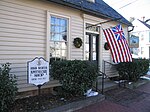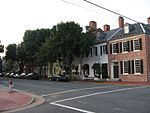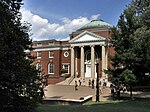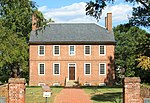Battle of Fredericksburg

The Battle of Fredericksburg was fought December 11–15, 1862, in and around Fredericksburg, Virginia, in the Eastern Theater of the American Civil War. The combat, between the Union Army of the Potomac commanded by Maj. Gen. Ambrose Burnside and the Confederate Army of Northern Virginia under Gen. Robert E. Lee, included futile frontal attacks by the Union army on December 13 against entrenched Confederate defenders along the Sunken Wall on the heights behind the city. It is remembered as one of the most one-sided battles of the war, with Union casualties more than twice as heavy as those suffered by the Confederates. A visitor to the battlefield described the battle as a "butchery" to U.S. President Abraham Lincoln. Burnside's plan was to cross the Rappahannock River at Fredericksburg in mid-November and race to the Confederate capital of Richmond before Lee's army could stop him. Bureaucratic delays prevented Burnside from receiving the necessary pontoon bridges in time and Lee moved his army to block the crossings. When the Union army was finally able to build its bridges and cross under fire, direct combat within the city resulted on December 11–12. Union troops prepared to assault Confederate defensive positions south of the city and on a strongly fortified ridge just west of the city known as Marye's Heights. On December 13, the Left Grand Division of Maj. Gen. William B. Franklin was able to pierce the first defensive line of Confederate Lt. Gen. Stonewall Jackson to the south, but was finally repulsed. Burnside ordered the Right and Center Grand Divisions of major generals Edwin V. Sumner and Joseph Hooker to launch multiple frontal assaults against Lt. Gen. James Longstreet's position on Marye's Heights – all were repulsed with heavy losses. On December 15, Burnside withdrew his army, ending another failed Union campaign in the Eastern Theater.
Excerpt from the Wikipedia article Battle of Fredericksburg (License: CC BY-SA 3.0, Authors, Images).Battle of Fredericksburg
Sunken Road, Fredericksburg
Geographical coordinates (GPS) Address Nearby Places Show on map
Geographical coordinates (GPS)
| Latitude | Longitude |
|---|---|
| N 38.2995 ° | E -77.4705 ° |
Address
Sunken Road 1004
22401 Fredericksburg
Virginia, United States
Open on Google Maps









